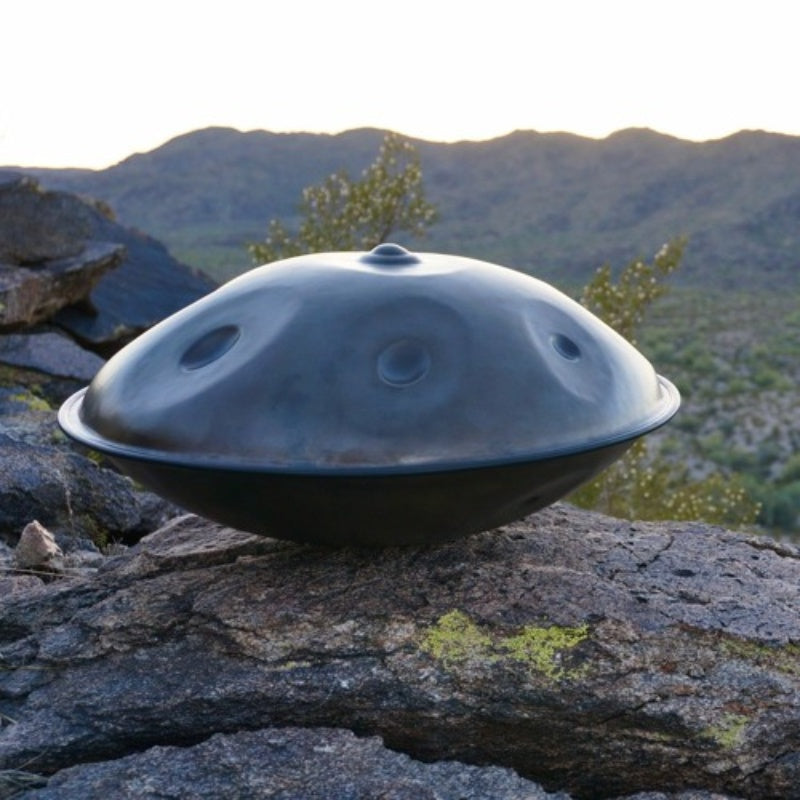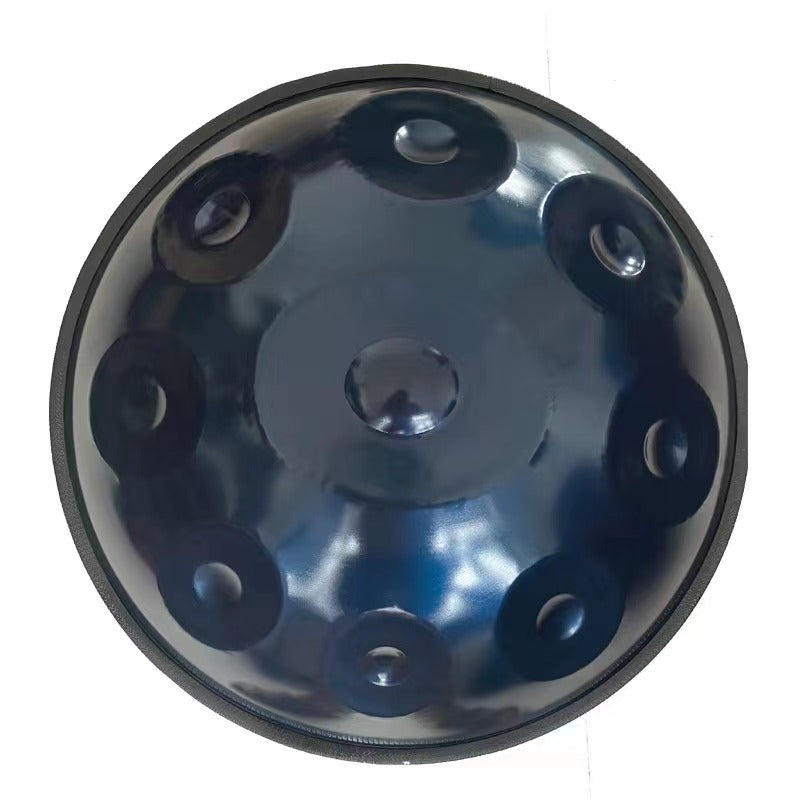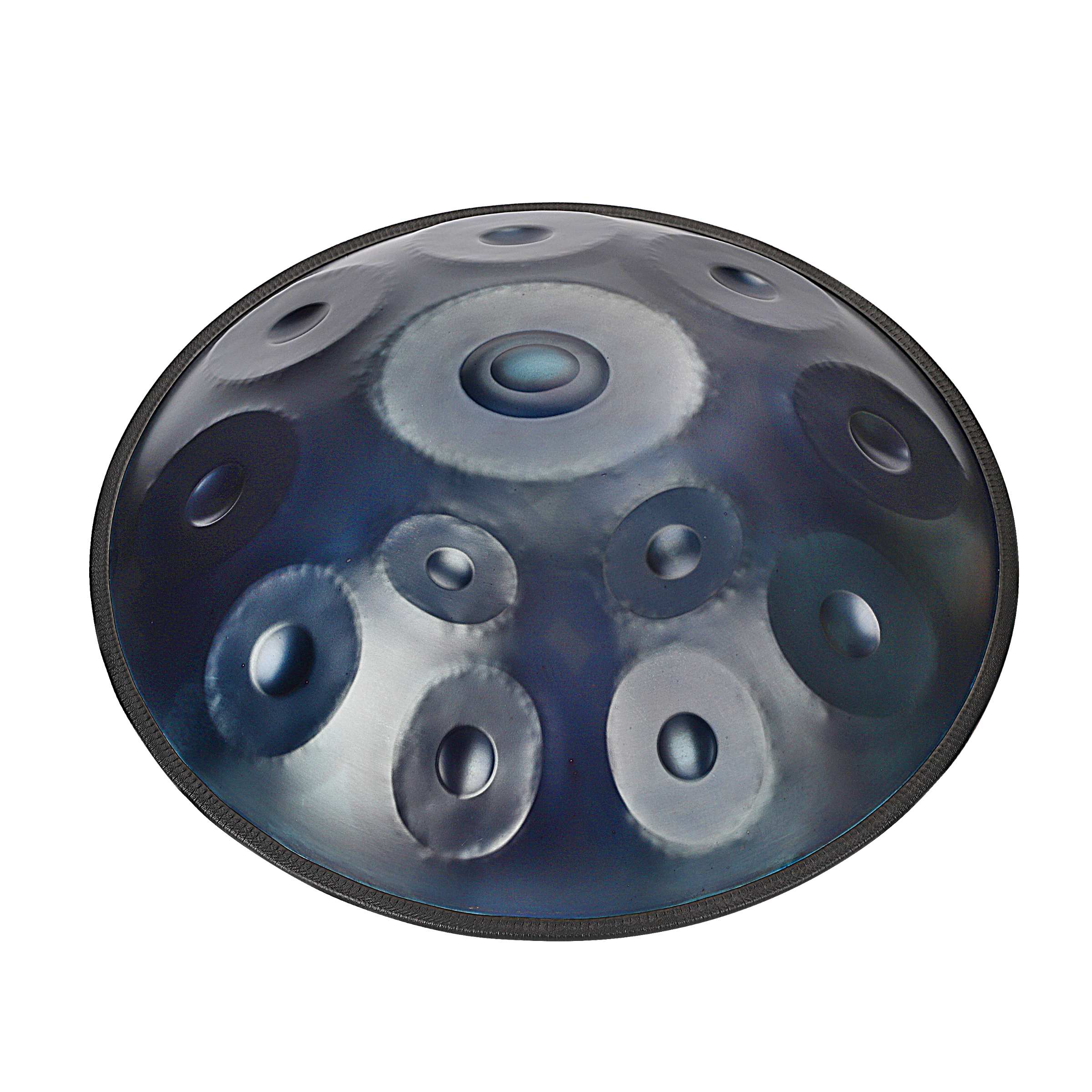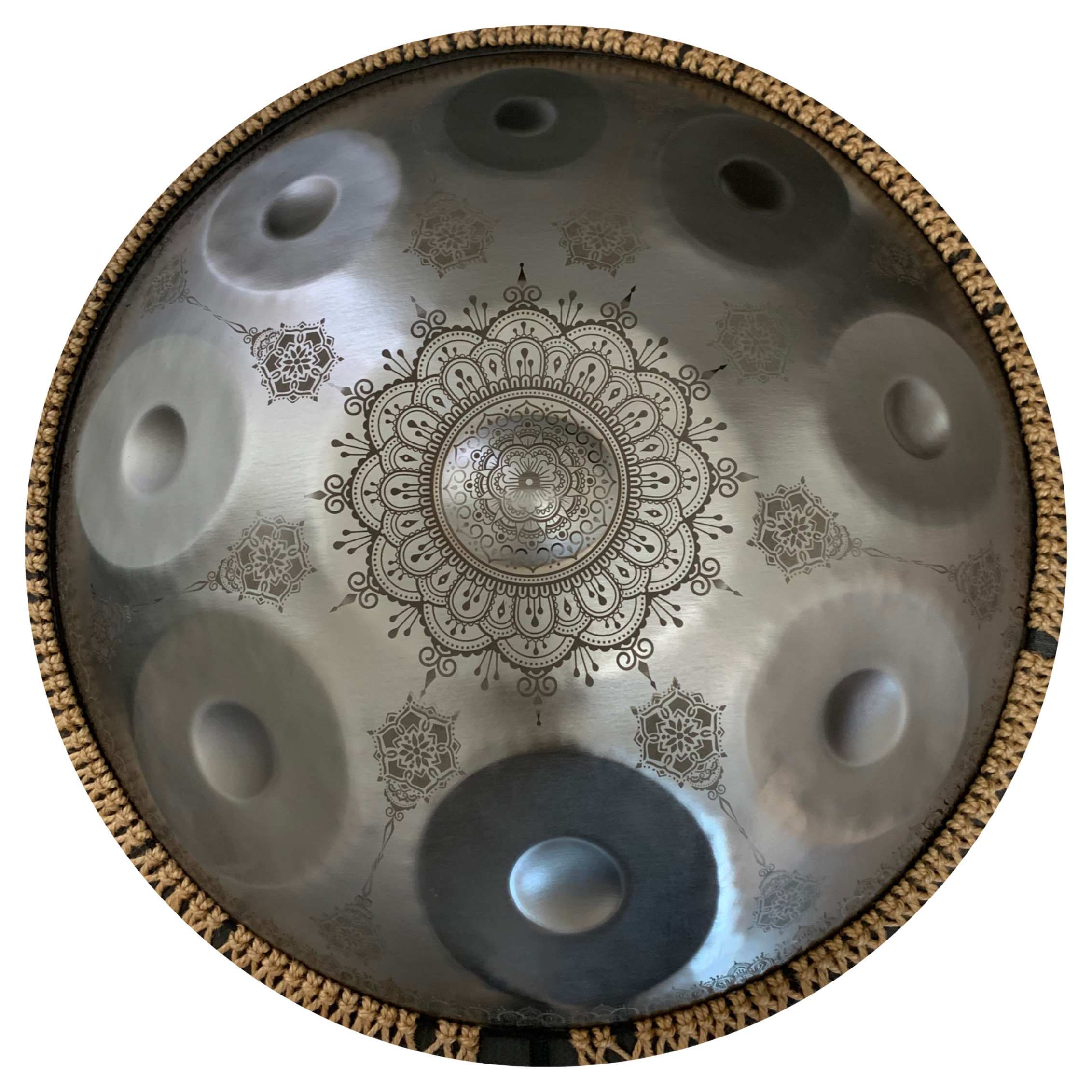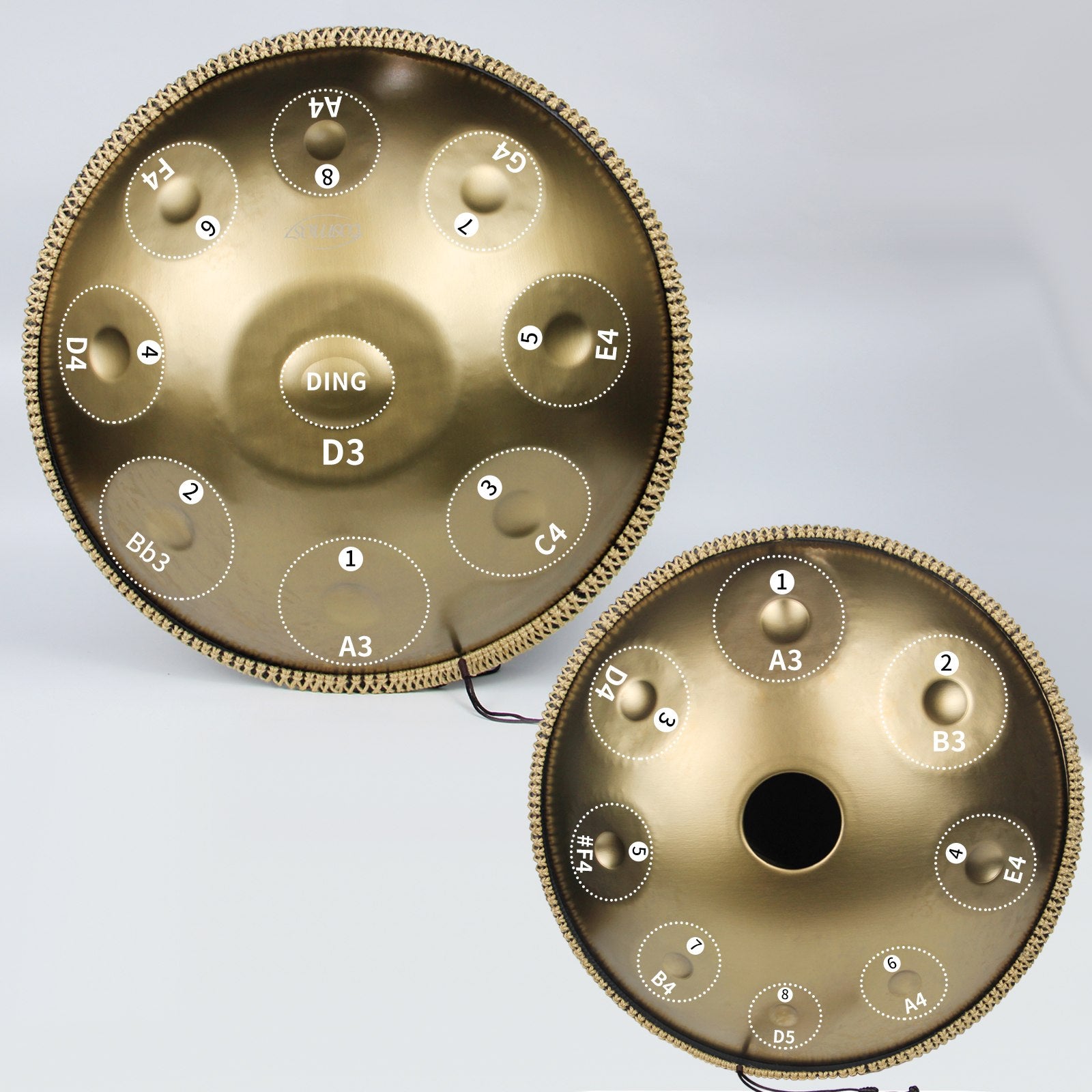Le handpan enchanteur est un instrument célébré pour ses mélodies envoûtantes et apaisantes. Il est devenu populaire parmi les musiciens et les amateurs de musique pour sa capacité à créer une variété de tons et d'harmonies. Si vous entrez juste dans le domaine des handpans, choisir le parfait peut sembler écrasant. Ce manuel vous fournira tous les détails pour découvrir le handpan pour débutants.

Comprendre le Handpan
Le handpan, également connu sous le nom de hang drum, est un instrument de percussion fabriqué en acier, composé de deux coques jointes pour former une chambre. La coque supérieure abrite une note (appelée "Ding") et plusieurs champs de tonalité environnants qui génèrent des hauteurs lorsqu'on les frappe. Joué avec les mains, la disposition des handpans permet de jouer et de créer des mélodies et des rythmes.
Pourquoi opter pour un handpan ?
Pour les novices, adopter le handpan présente des avantages ;
Facilité de jeu ; Contrairement aux instruments, maîtriser le handpan est relativement simple. Au départ, il n'y a pas de doigtés ou de techniques à conquérir, ce qui le rend parfait pour ceux qui s'initient à la musique.
Gratification instantanée ; Émettre des sons mélodiques avec des motifs de base, sur le handpan, peut produire une musique délicieuse offrant rapidement une gratification instantanée et une motivation pour progresser davantage.
Flexibilité;
Le handpan est un instrument qui peut être utilisé dans des contextes musicaux, tels que des performances solo, des collaborations en groupe et des enregistrements en studio.
Avantages ; Les sons apaisants produits par le handpan offrent une expérience méditative bénéfique tant pour les joueurs que pour les auditeurs.
Facteurs à considérer lors de la sélection d'un handpan
Matériel et savoir-faire
La qualité des matériaux et de l'artisanat a un impact significatif sur la qualité et la durabilité d'un handpan. La plupart des handpans sont fabriqués en acier pour leur durabilité contre la rouille et l'usure. Les handpans haut de gamme sont soigneusement accordés par des artisans pour garantir que chaque note résonne parfaitement. Lors du choix d'un handpan pour débutants, il est conseillé d'opter pour des instruments fabriqués par des artisans reconnus pour leur qualité.
Échelle et accordage
Les handpans se déclinent en une variété d'échelles, chacune offrant des notes et des caractéristiques tonales. Les choix populaires pour les débutants incluent les échelles de ré mineur, do majeur et Ake Bono. La sélection de l'échelle doit s'aligner avec le style musical que vous souhaitez jouer ; les échelles majeures transmettent souvent de la luminosité et de la gaieté, tandis que les échelles mineures évoquent l'introspection et l'émotion. Écouter des échantillons d'échelles peut aider à déterminer celle qui correspond à vos préférences.
Taille et portabilité
Les dimensions et le poids d'un handpan influencent sa projection sonore, ainsi que sa facilité de transport. En ce qui concerne les handpans, la taille compte dans les tonalités qu'ils produisent. Les handpans plus grands émettent des sons tandis que les plus petits offrent une tonalité plus aiguë et sont plus faciles à transporter. Pensez à l'endroit et à la manière dont vous allez utiliser votre handpan. Si vous êtes quelqu'un qui voyage souvent avec votre instrument, opter pour un modèle léger pourrait être la meilleure option.
Considérez votre budget
Les handpans sont disponibles à une gamme de prix en fonction de facteurs tels que la marque, le matériau utilisé et l'échelle de l'instrument. Bien que choisir une option puisse sembler attrayant, investir dans un handpan de haute qualité peut améliorer considérablement son son et sa durabilité. Trouvez un équilibre entre l'accessibilité et la qualité lorsque vous établissez votre budget, car il est important d'investir dans un instrument qui répond à vos exigences et qui dure dans le temps.
Vérifier la réputation de la marque
Il est crucial d'examiner la réputation des marques de handpan avant de prendre une décision. Des marques connues comme PANArt (les créateurs du hang) et d'autres fabricants réputés ont bâti des réputations pour produire des instruments de premier ordre. Prenez le temps de lire des avis, de regarder des vidéos et d'obtenir des recommandations de joueurs pour vous assurer que vous achetez auprès d'une source fiable.
Tester Différents Handpans
La meilleure façon de trouver le handpan est d'essayer des modèles, en personne. Visiter des magasins de musique ou assister à des festivals de handpan vous donne l'occasion de jouer des handpans vous-même et d'expérimenter leur son et leur jouabilité.
Lors des tests, assurez-vous de prêter attention aux détails suivants :
Qualité sonore ; Écoutez les notes sans échos indésirables.
Confort et jouabilité ; Vérifiez si l'instrument se sent bien dans vos mains et si vous pouvez atteindre toutes les notes facilement.
Réactivité ; Testez comment l'instrument réagit à différents styles de jeu comme des tapotements doux ou des frappes plus fortes.
Si vous ne pouvez pas visiter en personne, de nombreux vendeurs de confiance proposent des échantillons sonores et des vidéos en ligne. Bien que ce ne soit pas aussi bien que de l'essayer vous-même, ces ressources peuvent tout de même vous donner une idée de la sonorité de l'instrument et de sa qualité.
Prendre soin de votre handpan
Une fois que vous avez trouvé votre handpan, il est important de l'entretenir pour préserver son son et son apparence. Voici quelques conseils pour prendre soin de votre handpan :
Nettoyage ; Utilisez un chiffon régulièrement pour essuyer les empreintes digitales et les huiles sans utiliser de produits chimiques qui pourraient endommager l'acier.
Stockage ; Gardez votre handpan dans un endroit sec et frais et utilisez un sac ou une housse rembourrée pour le protéger lorsqu'il n'est pas utilisé ou pendant le transport.
Conditions de jeu ; Évitez de jouer de votre handpan à des températures élevées ou dans une humidité élevée, car cela peut affecter le métal et l'accord.
Accordage ; Votre handpan peut nécessiter un nouvel accordage, avec le temps. Pour garder votre handpan en bon état, il est judicieux de trouver un accordeur expérimenté avec les handpans.
Explorer la polyvalence des handpans
Un aspect des handpans est leur polyvalence. Ils peuvent être utilisés dans divers genres et contextes, allant des performances solo tranquilles aux compositions d'ensemble animées. Voici quelques façons de découvrir le potentiel de votre handpan :
Performances Solo ; Les riches tonalités et la disposition conviviale des handpans les rendent parfaits pour les performances. Expérimentez avec des gammes et des techniques de jeu pour créer des pièces musicales.
Collaborations ; Unissez vos forces avec des musiciens pour explorer des sons et des styles. Les handpans complètent bien des instruments comme les guitares, les flûtes et les percussions.
Enregistrement et Production ; Intégrez le son fascinant du handpan dans vos projets d'enregistrement. Son timbre unique peut apporter une touche aux productions musicales allant des mélodies ambiantes aux airs populaires.
Applications thérapeutiques ; Les tonalités apaisantes des handpans en font un outil précieux pour la musicothérapie, les pratiques de méditation et les séances de relaxation. Utilisez-les pour créer des paysages sonores qui favorisent la paix et le bien-être.
Ressources d'apprentissage et de croissance
Pour ceux qui commencent, il existe de nombreuses ressources pour vous aider dans votre parcours en tant que joueur de handpan ;
Leçons et cours en ligne ; De nombreux joueurs de handpan expérimentés proposent des tutoriels et des cours qui couvrent les fondamentaux du jeu, les techniques et la composition musicale.
Engagement communautaire et forums ; Devenir membre de communautés et forums de handpan peut offrir des perspectives, des encouragements et des opportunités de se connecter avec des passionnés.
Participation à des ateliers et des festivals ; Assister à des ateliers et des festivals peut offrir des opportunités d'apprentissage. La possibilité d'interagir avec d'autres joueurs et artisans.
Littérature et manuels ; Divers livres et guides sont accessibles qui explorent les subtilités du jeu de handpan, son histoire et son entretien.
Dernières pensées
Sélectionner le handpan pour débutants implique de prendre en compte des facteurs tels que le matériau, l'échelle, la taille, le coût et la réputation de la marque. En comprenant ces aspects et en expérimentant avec différents modèles, vous pouvez découvrir le handpan qui correspond à vos aspirations musicales. Des routines d'entretien appropriées, ainsi que l'exploration de la polyvalence de l'instrument, vous garantiront de profiter de son son pendant des années. Que vous soyez musicien ou que vous débutiez, le handpan offre un voyage musical qui transcende les frontières conventionnelles.
Mettre des efforts dans la recherche et l'expérimentation avec les handpans en vaut la peine car cela vous conduira à trouver un instrument qui vous motive et vous apporte de la joie. Gardez à l'esprit que l'expérience de maîtriser et de jouer du handpan est tout aussi merveilleuse que les mélodies qu'il produit, alors ne vous précipitez pas, savourez le voyage et laissez votre exploration évoluer naturellement.

